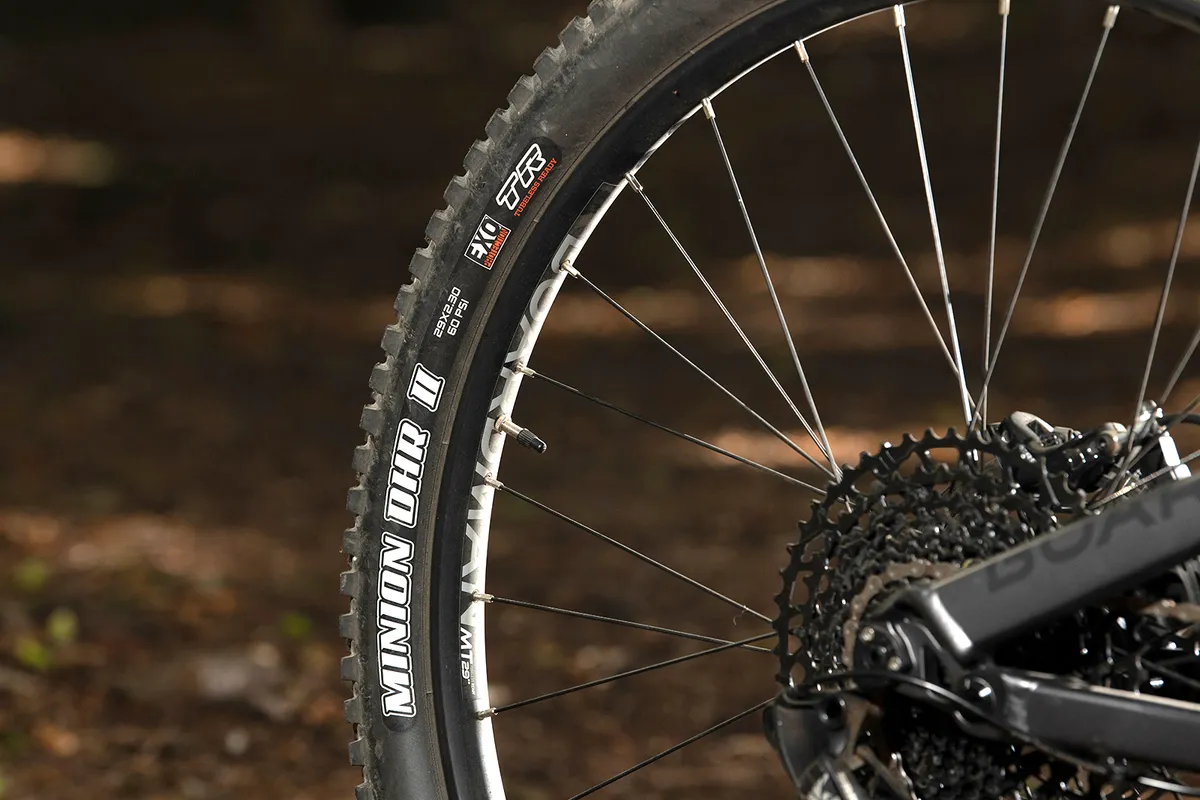The Boardman MTR 8.9 shares its geometry and suspension with the more expensive MTR 9.0, and thanks to progressive geometry and a carefully procured spec, is designed to up the ante when it comes to trail riding thanks to plenty of easy-to-unlock speed if you decide to upgrade down the line.
Boardman MTR 8.9 frame, suspension and geometry details
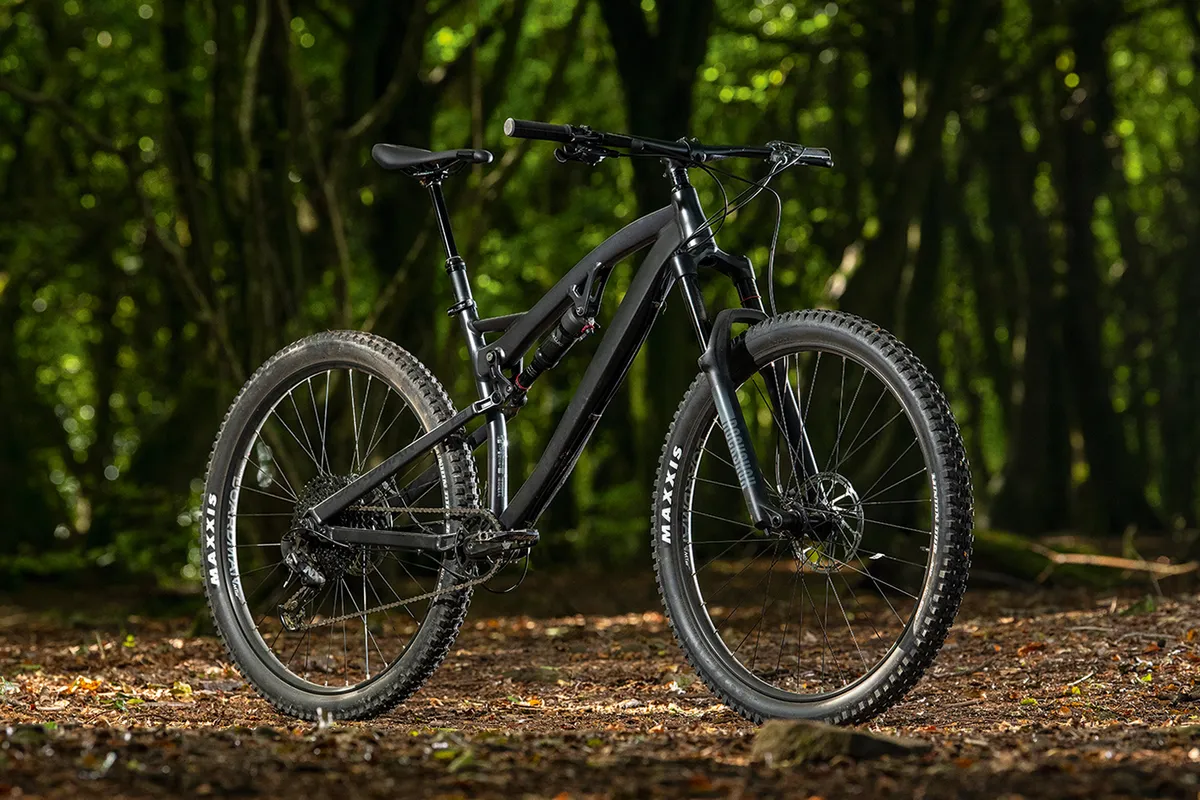
Boardman’s X7 triple-butted 6061 alloy has an angular, purposeful design, where its shock is mounted horizontally beneath the top tube. The bike's cables are routed externally along the underside of the down tube, which should help make maintenance easier, but there’s a port on the rear of the seat tube for internally routed dropper post cables.
There’s a bottle cage mount on the top side of the down tube that’s compatible with a 550mm or smaller bottle, and a tapered head tube.
It has a 73mm BSA threaded bottom bracket and uses the Boost 148x12 rear axle spacing, although there’s no in-built or stick-on chainstay protection.
Boardman MTR 8.9 details
- Tight for space: The horizontally-mounted shock doesn’t leave much room inside the front triangle, so Boardman recommends a 550ml or smaller bottle, plus a side-entry cage
- Gearing up: SRAM’s NX Eagle drivetrain isn’t the most refined, but has 12 gears and should help you tackle even steep climbs
- Gripping stuff: Maxxis tyres have a solid reputation, so it’s great to see the legendary Minion DHF and DHR II fitted to the Boardman
Its 145mm of rear-wheel travel is controlled using a Horst-link suspension design, with a pivot in front of the rear axle connecting the chain- and seatstays together.
This, in theory, should enable it to better isolate braking forces from suspension forces than single-pivot suspension designs because the brake is attached to the seatstay rather than the chainstay and rotates less around the brake under compression, such as on the Marin Rift Zone 1.

Although Boardman claims its MTR 8.9 is intended for aggressive trail riding, our size large test bike’s geometry is designed to position it on the slightly less progressive end of the scale. It has a 66-degree head angle and a 75.5-degree seat tube angle, both middle of the road.
| | S | M | L | XL |
|---|---|---|---|---|
| Seat angle (degrees) | 75.5 | 75.5 | 75.5 | 75.5 |
| Head angle (degrees) | 66 | 66 | 66 | 66 |
| Chainstay (mm) | 440 | 440 | 440 | 440 |
| Seat tube (mm) | 410 | 430 | 475 | 480 |
| Top tube (mm) | 598 | 615 | 638 | 655 |
| Head tube (mm) | 90 | 100 | 110 | 120 |
| Fork offset (mm) | 42 | 42 | 42 | 42 |
| Bottom bracket drop (mm) | 33 | 33 | 33 | 33 |
| Wheelbase (mm) | 1182 | 1201 | 1225 | 1244 |
| Stack (mm) | 611 | 620 | 629 | 638 |
| Reach (mm) | 440 | 455 | 475 | 490 |
| Crank length (mm) | 170 | 170 | 170 | 170 |
| Stem length (mm) | 45 | 45 | 45 | 45 |
| Handlebar width (mm) | 780 | 780 | 780 | 780 |
Elsewhere, the geometry is more modern, but not extreme, with a generous 475mm reach and long 440mm chainstays.
These figures should give the MTR 8.9 a balanced ride, with the head angle providing better low-speed agility than a slacker figure, and the reach and chainstays calming things down at pace.
Boardman MTR 8.9 specifications
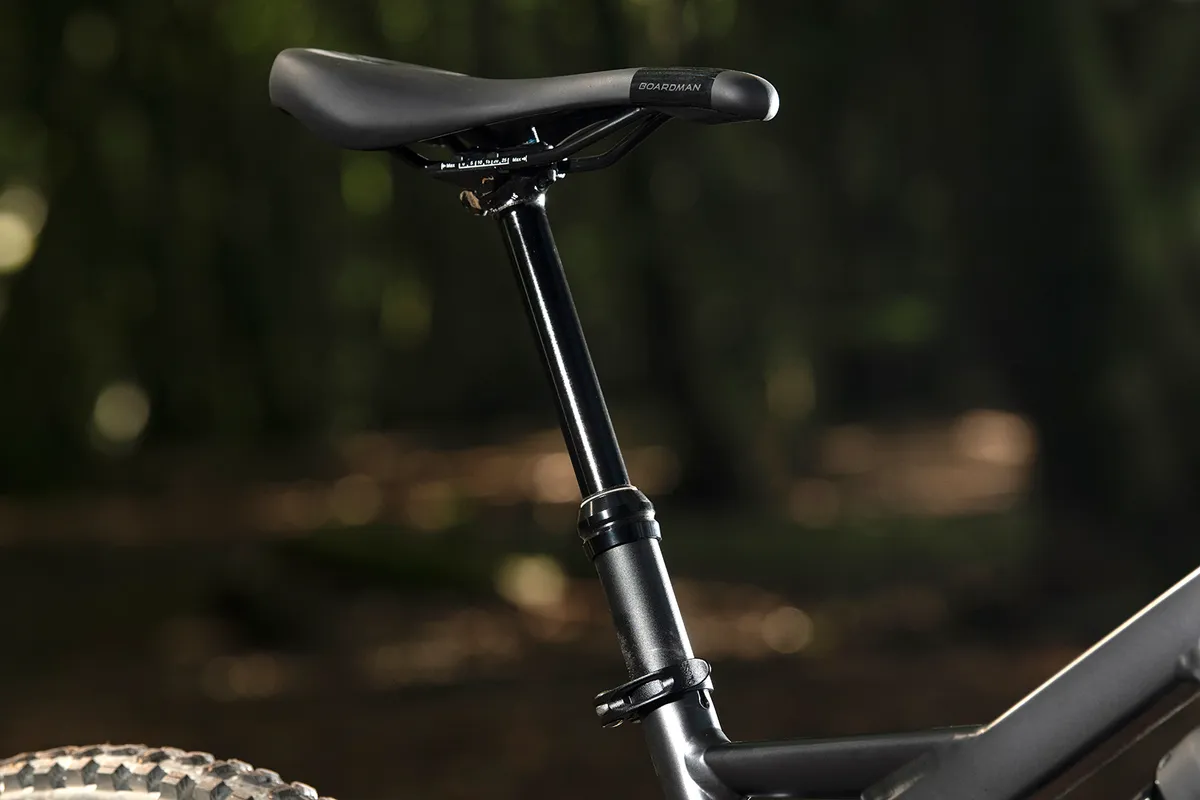
The MTR’s kit represents a fantastic blend of performance, strength and cost. RockShox’s sturdy 35 Gold RL fork has beefy 35mm stanchions – the same diameter seen on the brand’s Pike and Lyrik forks – and 150mm of travel.
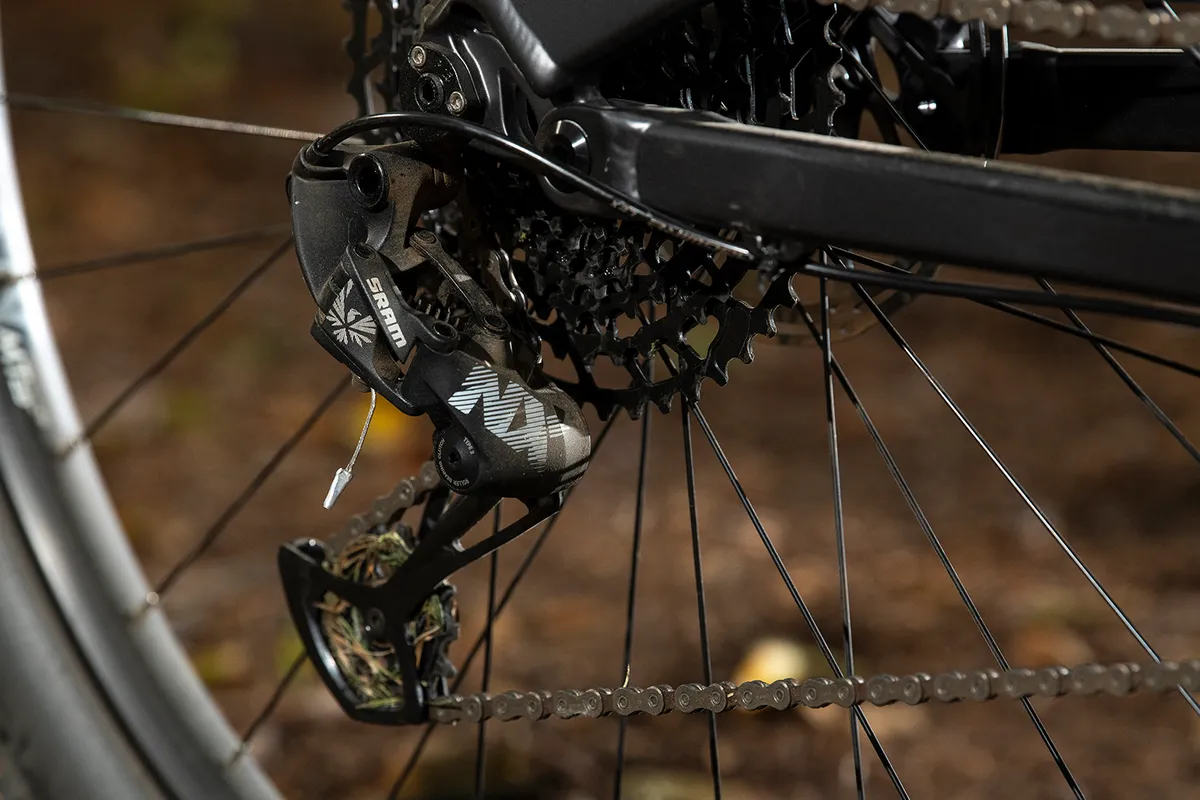
At the rear, the brand’s Deluxe Select+ shock comes with external rebound damping adjustment and a lockout lever.
It’s fitted with SRAM’s NX Eagle 12-speed drivetrain, with a 32t chainring and the 11-50t cassette, although the NX cranks use a square tapered bottom bracket. Also from the SRAM stable are the Guide T two-piston brakes with 180mm rotors.
At this price point, it’s great to see a dropper post fitted, and the Satori Sorata Pro2 dropper has 150mm of travel. Elsewhere, the rest of the bike’s kit is Boardman-branded, including the wheels, bar, stem, grips and saddle. Finally, the rims are wrapped in Maxxis EXO-casing tubeless-ready tyres, with a Minion DHF up-front and a Minion DHR II at the rear.
Boardman MTR 8.9 ride impressions

Overall, the MTR 8.9 is comfortable, especially on less steep trails.
The relaxed riding position its geometry generated didn’t mean I put too much weight through my hands, not being forced to lower my shoulders forwards towards the bars because of an over-stretched top tube. I also wasn’t forced too far over the back, needing to cling onto the bars with my fingertips, usually a problem on bikes with slacker seat-tube angles.
This neutrality is echoed by the suspension, which bobs very little under pedalling, so your input is rewarded with swift progress.
Although it feels taught on the gas, the rear end has enough give on the smaller bumps, doing a good job of absorbing trail chatter and creating plenty of comfort.
It’s impressively capable deeper into its travel, too, where it ramps up quickly enough to forgive poor line choices, and inspires confidence over bigger hits.
The 35 fork is a good match up-front, easily soaking up small bumps, even on steep climbs when it’s relatively unweighted.
When the ascending gradient steepens, the seat-tube angle begins to feel too relaxed. The kink in the seat tube means that the higher you run your saddle, the slacker the angle feels on the trail.
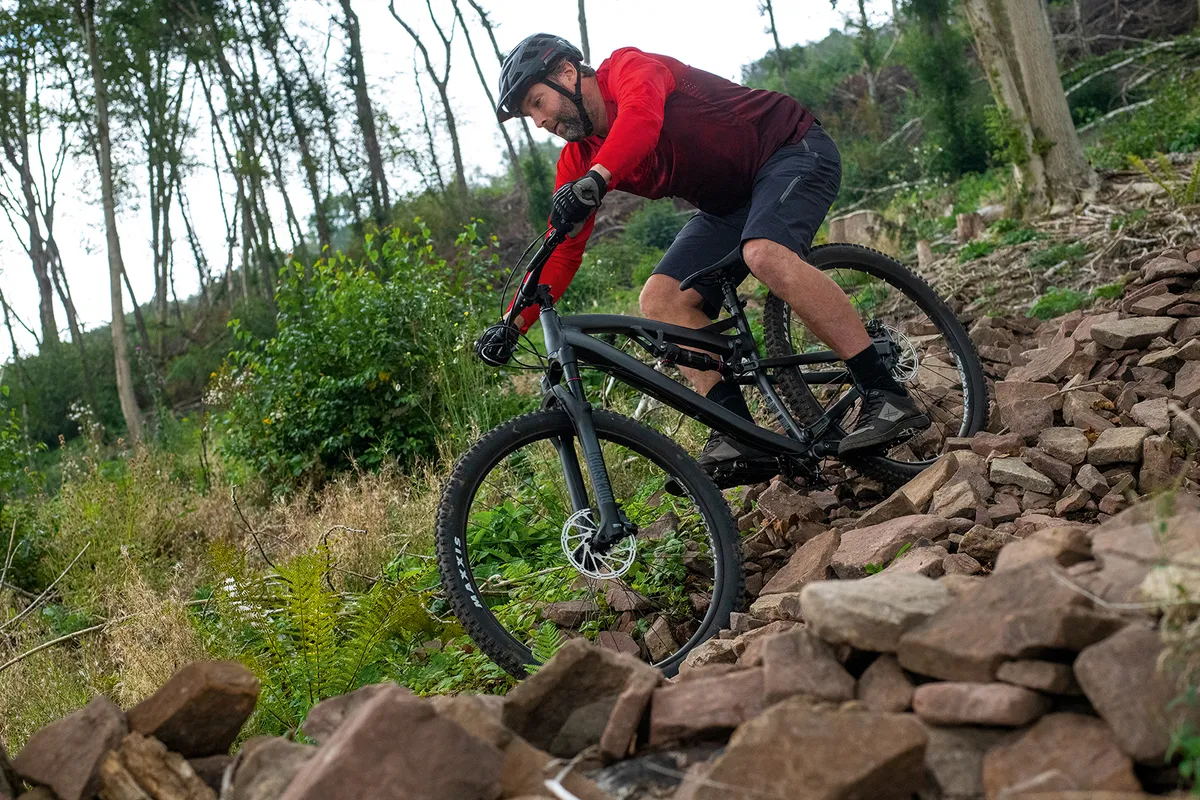
I found I had to shift my weight forward onto the saddle nose to keep the front wheel on the ground while maintaining rear-wheel traction.
This balancing act reduces the likelihood of cleaning steep technical ascents, but they need to be particularly challenging for it to become a real issue.
Although the dropper post lever’s action didn’t feel hugely refined or ergonomic to use compared to a 1x-style remote, being able to use the post on trail centre loops improved flow, helping to enhance the bike’s ride. The post has enough travel to not need manual adjustment in the frame for both the descents and ascents.
Although it’s only got SRAM’s 11-50t cassette (rather than the 10-52t on GX and higher models) and 32t chainring (rather than a smaller one), I didn’t feel that it needed more gears, given its low weight and snappy-feeling suspension.
Working with, rather than against, gravity, the suspension’s calm and supportive feel dominates the ride. The bike didn’t wallow and dive through its travel around turns and through compressions, helping to stabilise its dynamic geometry.
I was able to push the Boardman through turns and dig the back wheel into the ground as I would on a more expensive bike with slacker, longer geometry and more travel, without fear of the consequences.
The pay-off for this support is that the MTR doesn’t deliver the smoothest ride, but I’d prefer to trade some comfort and smoothness for plenty of progression.
On the descents, the MTR still has just enough small-bump compliance to be comfortable and grippy, though. The Maxxis tyres improve grip further.
Although they’re made from dual- rather than triple-compound rubber, the tried-and-tested Minion tread patterns are well-suited to most trail conditions, only coming unstuck in deep, claggy mud or over ice-like roots and rocks.
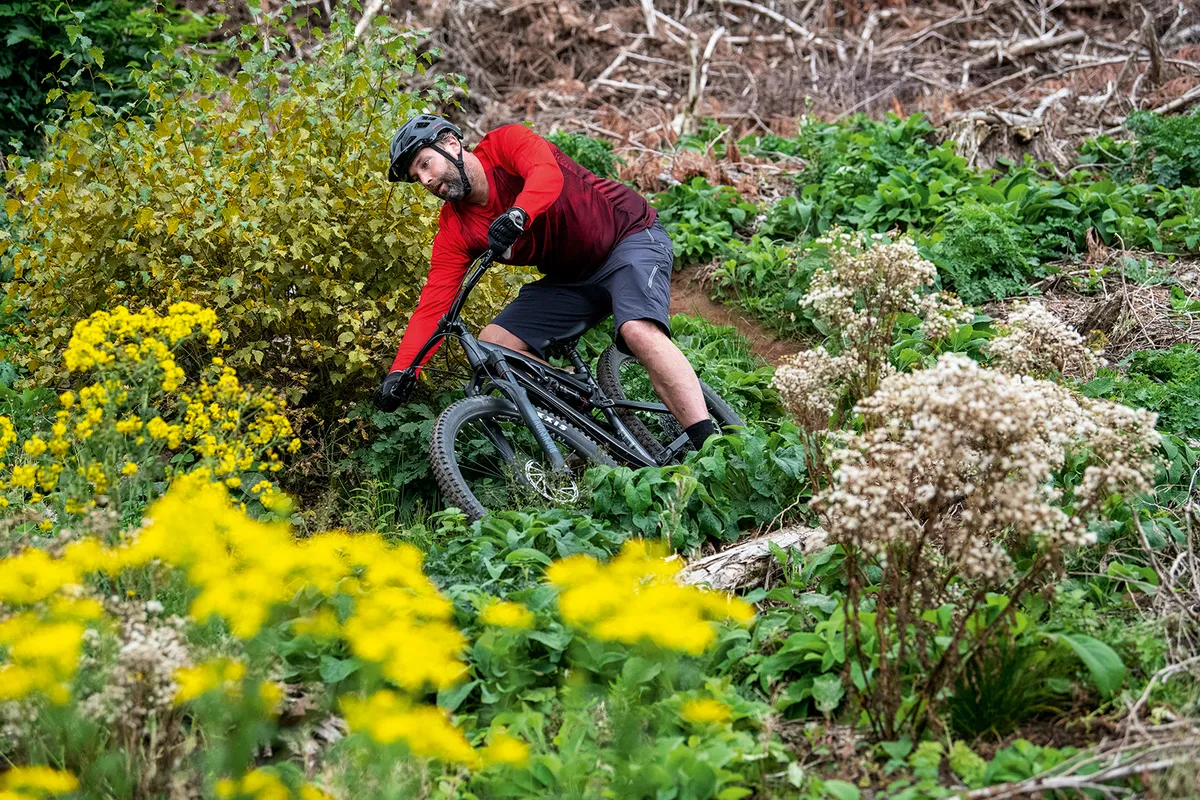
I found the Boardman to be a little noisy on the descents, due to cable rattle and the chain slapping the unprotected chainstay.
Along with the grips being a little hard for our tastes, causing some discomfort on longer descents, the fork also compression spiked in more extreme scenarios where descents were very rough, or speeds high. This wasn’t frequent, however.
On sustained descents, the brakes also began to feel wooden, adding to hand fatigue caused by the grips, which were a little hard for our tastes.
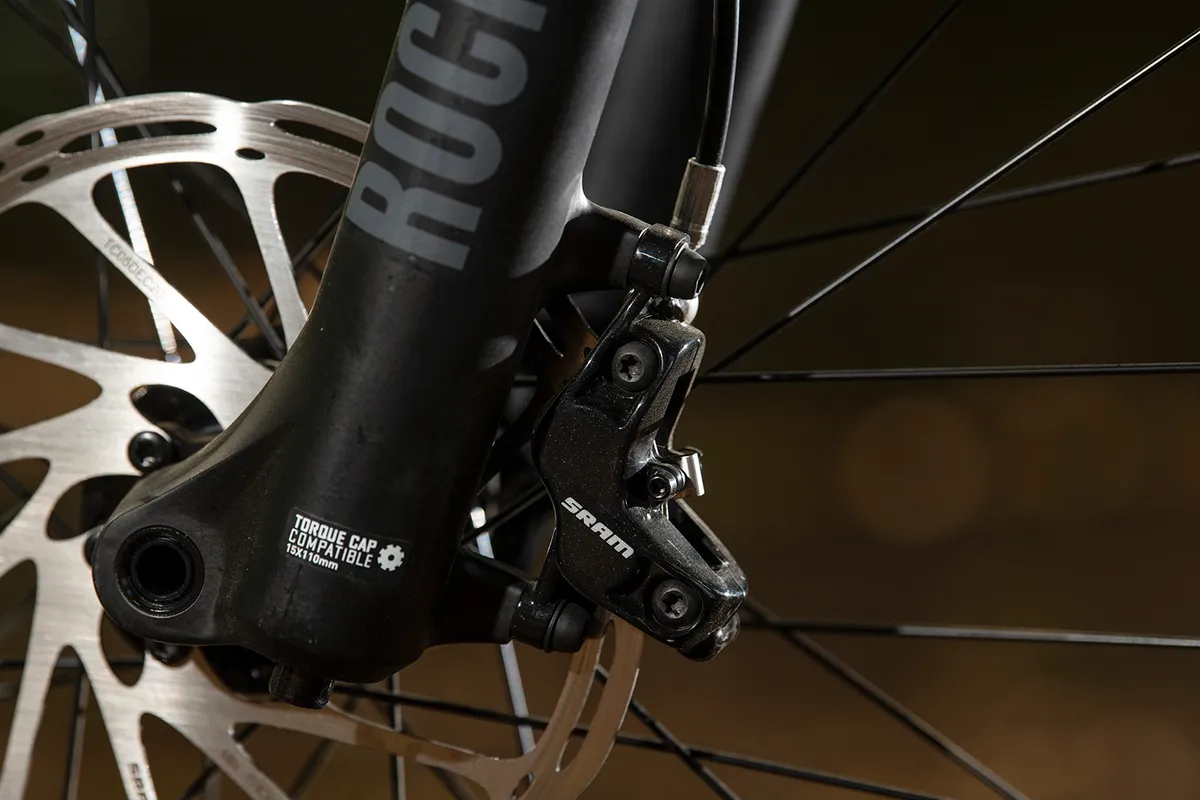
Despite these issues, I really liked the feel of the MTR 8.9, and found it perfectly suited to a speedy trail-centre blast, especially when the climbs or descents remained fun rather than break-neck fast.
It’s ripe for upgrades, which in this case I’d choose to make it a lighter, faster, mile-munching machine, rather than turning it into a downhill destroyer.
How we tested
We put three great-value full-sus trail mountain bikes to the test to find out which one is most deserving of your cash.
Each bike was tested on the varied trails and tracks of Scotland’s Tweed Valley, ranging from trail centre loops at Glentress and bridleway bashing on the Southern Upland Way, through to the more extreme descents in Innerleithen during a range of weather conditions.
Also on test
Product
| Brand | boardman |
| Price | 1750.00 GBP |
| Weight | 16.0500, KILOGRAM (L) - without pedals |
Features
| Fork | RockShox 35 Gold RL, 150mm (5.9in) travel |
| br_stem | Boardman, 45mm |
| br_chain | SRAM SX Eagle |
| br_frame | Aluminium Alloy, 145mm (5.7in) travel |
| Tyres | Maxxis Minion DHF EXO TR 29x2.3in (f), Maxxis Minion DHR II EXO TR 29x2.3in (r) |
| br_brakes | SRAM Guide T, 180mm rotors |
| br_cranks | SRAM NX Eagle, 32t |
| br_saddle | Boardman MTR |
| br_wheels | Boardman 30mm rims on Boardman hubs |
| br_headset | FSA |
| br_shifter | SRAM NX Eagle |
| br_cassette | SRAM SX Eagle, 11-50t |
| br_seatpost | Satori Sorata Pro2 150mm dropper |
| br_gripsTape | Boardman |
| br_handlebar | Boardman, 780mm |
| br_rearShock | RockShox Deluxe Select+ |
| br_bottomBracket | SRAM GXP |
| br_availableSizes | S, M, L, XL |
| br_rearDerailleur | SRAM NX Eagle (1x12) |
